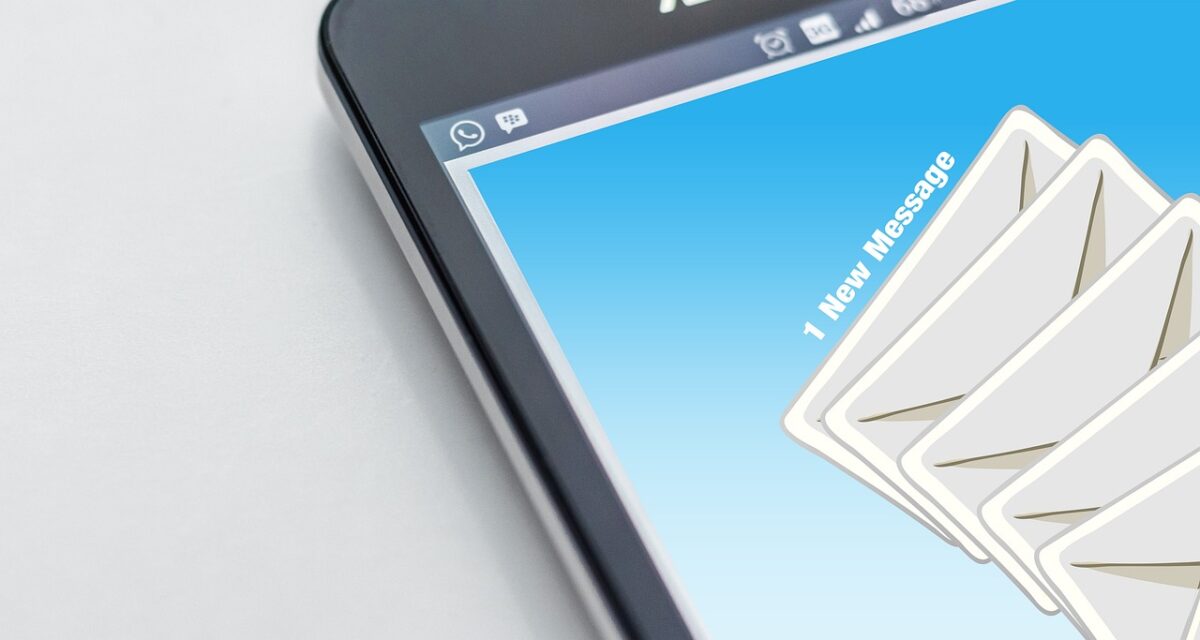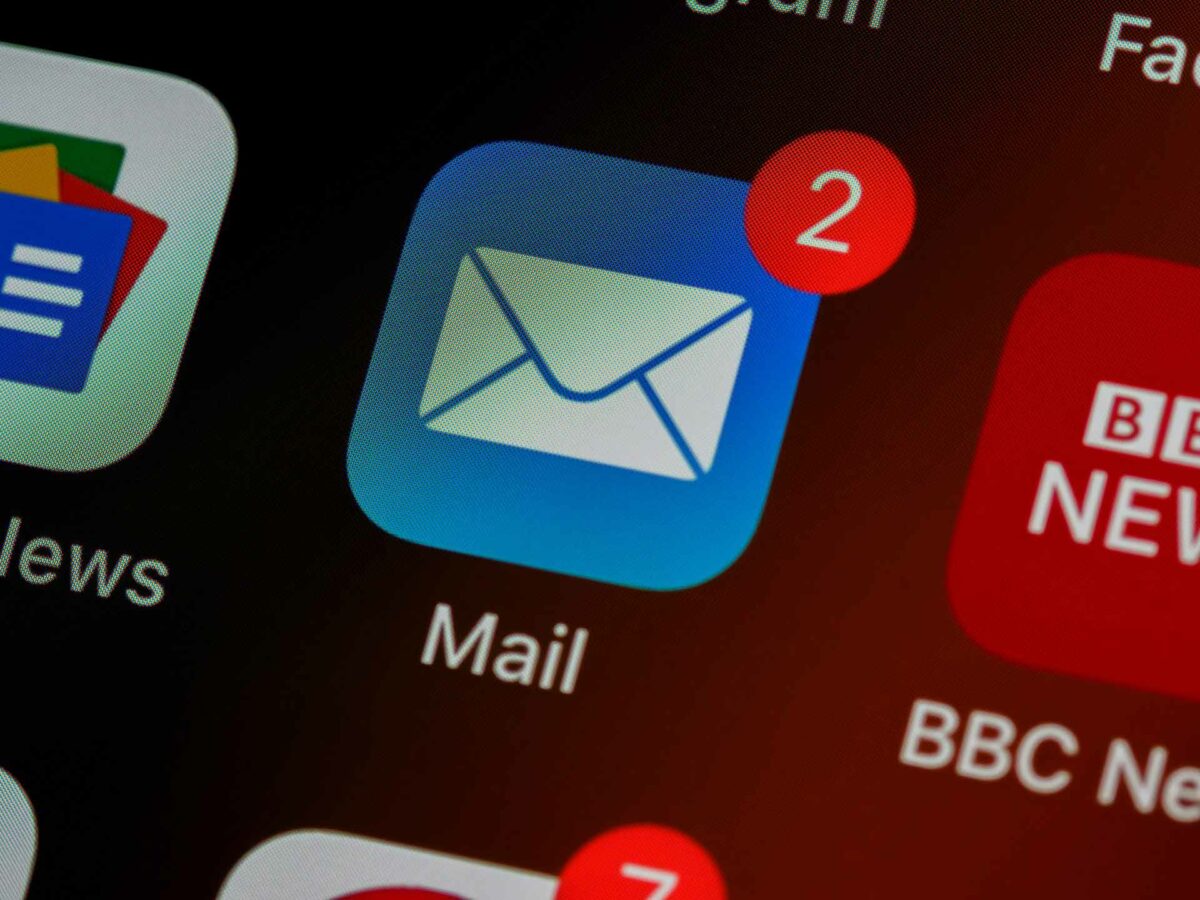Sending an email was a revolutionary concept many years ago, but the data on mobile email statistics show it has gone far beyond expectations.
Nowadays, emailing is a part of everyday life for most people, and it includes many features that exceed simply sending and receiving emails.
Stats show that by 2025, roughly 376.4 million emails will be sent daily.
That’s a staggering number that’s hard to comprehend, but email is utilized every day on a global scale.
In our current era, emails can be used as login verification, and there is a long list of providers that offer users different sets of features.
Many also provide a suite of tools to handle different types of work, document needs, and much more.
In this article, we’re going to focus on the statistics surrounding mobile emailing and how it has become the norm for many people worldwide.
Post Contents
Key Statistics
- Mobile emails accounted for 42% of all opened emails in 2019
- 85% of users access their email with a smartphone
- 58% of adults review their email accounts first thing in the morning
- In 2020, over 4 billion people were using various email services
- 50% of customers prefer to communicate with a brand through email
Living in a Mobile World
There are many reasons why mobile emailing has become more popular over the years.
One of which is easy access, as most people are on the go for a large part of their day.
Checking email on a phone is less of a hassle than opening up your laptop.
In many cases, mobile email applications have everything you might need to open and reply to emails.
You can also easily categorize emails, empty the trash bin, clear out spam, and much more.
Although many people still navigate their emails on computers as well, this is generally only when they’re already working on the device in multiple aspects.
In any other setting, people tend to just grab their phone, tap on the email application, and handle it all from there.
This may seem like an obvious topic, but there is a long list of statistics that shed a thorough light on why mobile emailing is as popular as it is.
General Mobile Email Statistics in 2024

This article will dive into a few unique categories regarding mobile email statistics, but we’re going to start with some general data points to get the ball rolling.
The following statistics provide a general overview of mobile emailing to show how relevant it is to everyday users.
From individuals to professionals, checking your email on your phone is generally the top choice over desktop devices.
1. Number of Smartphone Users Worldwide
Current data tells us that there are an estimated 6.64 billion smartphone users across the globe.
This alone plays into mobile email statistics, as many of these users have at least one email application on their phones.
Ease of use and access is a big selling point for smartphones, and people really appreciate the efficiency of the device.
The number above comes to about 83.72% of the world’s population, and it’s expected to grow each year.
Many people also have more than one email account to manage.
In our current era, there are roughly 1.9 active email accounts for every user.
You’d be shocked at the growth rate for the number of emails sent and received on a daily basis.
Between 2017 and 2025, the number of emails coming and going every day will have increased by nearly 100 billion.
(99Firms)
2. How Many Emails are Sent Every Day?
There are a few data points we can review that’ll help provide some perspective on the number of emails that are sent each day.
Back in 2017, it was recorded that 269 billion emails were delivered and received.
By 2018, this number went up to 281.1 billion, and the most recent statistics show this number has climbed to 333.2 billion.
You can only imagine what this might look like in a few years.
2025 is looking at 376.4 billion emails sent and received during that year.
A large portion of this figure is simply from the fact that a majority of the human population uses a smartphone every single day.
Even with hundreds of billions of emails being sent on a consistent basis, the number will continue to increase as more people adopt this method of checking their email.
It offers an efficiency that’s hard to pass up and shows just how large the email market has become.
(99Firms)
3. What’s the Market Penetration Rate for Emails?
Recent data taken from 2019 shows that the market penetration for emails was 90.9% at the time.
Statistics that are paired with this data include how Americans manage their email.
89% of Americans look at their email accounts at least once per day.
On top of that, 27.6% check their inbox up to five times per day, and 20.9% check their inbox over five times per day.
Some of this may sound excessive, but when so many things are linked to your email accounts, your inbox can stack up pretty quickly.
Aside from the number of emails coming and going, market penetration rate, and number of smartphone users, we can also review the numbers behind global email users.
(99Firms)
4. Total Number of Email Users Worldwide
With the global population exceeding 8 billion, most of them have at least one email account.
Creating, using, and managing an email account is easier than ever and has become an essential part of our personal and professional lives.
In the table below, you can get a look at how the number of email users increased over the years.
Keep in mind this data focuses on years from 2017 to predictions up to 2025.
| Year | Number of Email Users |
| 2017 | 3.718 billion |
| 2018 | 3.823 billion |
| 2019 | 3.930 billion |
| 2020 | 4.037 billion |
| 2021 | 4.147 billion |
| 2022 | 4.258 billion |
| 2023 | 4.371 billion |
| 2024 | 4.481 billion |
| 2025 | 4.594 billion |
Even if the early days of email seem archaic to what it is now, the need and adoption of email will only continue to become more relevant.
As mentioned earlier, one of the first things many people do in the morning is check their email.
One could argue that social media and general browsing are a part of this as well.
Although this is true, the gap between them is pretty significant.
(Truelist)
5. The First Task of the Morning
Whereas 20% of people dive into general browsing first thing in the morning, and 14% check their social media, almost 60% of individuals check their email accounts first.
Considering there’s a lot of personal and professional communications through email, many people want to cover their bases before the day gets started.
You can see what many smartphone users like to start their day with in the table below.
| Platform/Content | What % of Users Check in the Morning |
| 58% | |
| General Internet Search | 20% |
| Social Media | 14% |
| News | 5% |
| Company Intranet | 3% |
Something that stands out about this data is that news used to be one of the most common things for people to check in the morning.
However, it’s so easy to source and digest current news nowadays you don’t have to chime in at a specific time of day.
Emails can bring either great or catastrophic news alongside a lot of spam that requires cleaning.
Many people like to keep their email in check as it’s a core part of their everyday lives.
(Truelist)
6. What Generation Dominates the Mobile Email Space?
When you take into account just how long emailing has been around, you can assume that multiple generations make use of the technology.
The beginnings of emailing go all the way back to 1969.
So, the number of users that make up the mobile email market spans quite a few age groups.
You might be surprised to learn this, but Gen Xers dominate the email space, accounting for 92% of active email users.
However, other generations are close behind, as millennials come in second at 89%.
Even if Gen Z is considered to be a younger crowd, 85% of this generation uses more than one email service.
Another interesting notion is that people tend to use email more as they age, as it starts to become a more common and professional form of communication.
A lot of this comes from the numerous tools that are included with emails.
Gmail is a great example, as it also comes with tools like resume builders, Google Docs, Google Sheets, calendar tools, and much more.
Speaking of Gmail, the email service created by Google is the most widely used all over the world, with roughly 1.8 billion users in total.
(Truelist)
Gmail and the Mobile Email Market

There’s a long list of reasons why Gmail became an email service of choice over the years.
It shouldn’t be disregarded that Apple Mail takes the leading market share, but Gmail is a strong competitive force.
You can find plenty of competitors to what Gmail offers, but they offer an ecosystem of tools and services that are hard to beat.
Not to mention a UI that’s enticing and easy to use.
Statistics on Gmail provide better insight into why the service became so popular, including its position in the market from multiple angles.
7. Let’s Talk About Active Users
Data taken from January 2020 shows that Gmail boasted 1.8 billion users at the time.
Now that we’re in 2023, you can expect that this number has probably gone up quite a bit.
This is a huge leap from the service’s beginning in 2004, as other email services were more popular at one point in time.
Here are the numbers behind Gmail’s user base growth over time:
- January 2012 – 350 million
- June 2012 – 425 million
- May 2015 – 900 million
- February 2016 – 1 billion
- October 2018 – 1.5 billion
- January 2020 – 1.8 billion
At this point, Gmail is the dominating force in the mobile email market.
You may come across a few people who primarily use other email services, but the reality is that most people tend to use Gmail accounts.
It’s also interesting to take a look at the demographics of where Gmail is usually the most popular.
(FindStack)
8. A Glance at Gmail Demographics
Among the active Gmail users, the average user is 31 years old.
If you think about it, this is the generation that “grew up” with Gmail, watching it develop and integrate into their lives as they aged.
You can get a tad more specific with demographics if you look at the use of Gamil in the United States.
Roughly 44% of the U.S. population uses Gmail, and it is widely popular with those who are between the ages of 20 and 40.
In the age brack of 18 to 29, 61% of this demographic actively uses Gmail as well.
The second most popular mobile email service is Yahoo, but the company’s numbers don’t even come close to the likes of Gmail.
Another report found that 83.5% of respondents between the ages of 14 and 18 use Gmail.
Whereas with Yahoo, only 6.9% of this demographic used the email service.
When Gmail was first getting started, Yahoo was one of the most popular email services of choice for most people.
(FindStack)
9. Gmail Accounts for a Majority of Email Opens
If you’ve seen it for yourself, Gmail has a pristine mobile application.
It’s extremely easy to navigate and manage emails from any of your folders.
Statistics from 2021 highlight that Gmail accounted for 75% of all email opens worldwide.
It should be noted that there is no lack of competition in the mobile email space.
Companies like Yahoo and Outlook are always looking for new ways to innovate.
The list below shows which email service providers account for the most email opens in 2021.
- Gmail – 75%
- Yahoo Mail – 14.8%
- Other – 7.8%
- Outlook.com – 2.4%
Although Gmail shouldn’t ignore the competition, it’s evident that the email service has a strong grip on the market.
Most people prefer to manage their emails from a mobile device.
One aspect of this that should be considered is that mobile notifications keep you up to date no matter where you are.
You can actively monitor your email accounts on the go, whereas you’d have to manually look into it when working with a desktop device.
(FindStack)
10. The Rise of Mobile Email Marketing
As marketers started to pick up on the fact that many people were managing their emails from their smartphones, some cold email tactics had to change.
They had to start optimizing emails to function on smartphone devices.
It also required a shift in how content was written so people didn’t feel overwhelmed scrolling through the email.
Data taken from 2019 shows that 19.29% is the average open rate for mobile emails, 2.27% is the average click rate, and 0.48% are hard bounces.
Although not every email is going to hit, it’s an aspect of mobile emails that marketers have to keep in mind.
From titles, sub-headers, and the length of the content, people respond to mobile emails differently than they do on a desktop device.
This segues into what role mobile emailing plays in the corporate world, as efficiency and ease of use are key in this aspect of life.
(MailChimp)
How Professionals Use Mobile Emailing

Although there are many jobs that require employees to sit at a desktop computer all day, you can guess there are plenty of industries where this isn’t the case.
A lot of people are on the go during their jobs, and mobile emails make communication a lot easier for everyone involved.
Some industries make use of it more than others, but it’s seen as an efficient tool that keeps the entire workforce updated at any hour of the day.
11. Mobile Emailing is a Core Part of the Work Week
With the known efficiency of mobile emailing, you might be surprised how much of the work week is taken up by emailing alone.
It accounts for roughly 16% of the workweek, and it’s widely popular among those aged 18 to 34 years old.
Keep in mind some of this emailing can include extensive tasks; it isn’t always about simple replies.
Nevertheless, mobile emailing is a common aspect of the modern workforce, and more people are embracing it every year.
(99Firms)
12. Office Workers Like to Keep Their Inboxes Clean
Considering most people have a constant flow of emails hitting their inboxes daily, keeping them clean and reducing clutter is important.
Statistics show that 55% of office workers keep their inboxes empty so that it’s open for essential communications only.
It also helps to ensure they don’t miss anything important.
The number of emails employees send and receive on a yearly basis generally lands around 45,990.
Surprisingly more than half of these employees are able to keep their inboxes empty.
This means it requires consistent effort on a daily basis, or their inbox could get cluttered fast.
Around 39% of these employees keep their inbox clean for the same reason, which is a feeling of relief.
A cluttered email inbox is bound to generate unwanted anxiety, among other stressors that come with any profession.
(99Firms)
13. Communication Between Brands and Consumers
A lot of the communication between brands and their consumers happens in mobile emailing.
50%, to be exact, and this is another testament to the efficiency and efficacy of mobile emailing.
Other forms of communication don’t really come close to mobile emailing, as direct email only accounts for 20%, and social media lands at 7%.
However, this 50% is actually a decrease found in data pulled from 2018.
Nevertheless, many consumers interact with brands through direct communication with ads through a mobile device.
This ties into the statistics mentioned earlier about email marketing, and it goes to show that it’s prevalent in more ways than one.
A lot of mobile emailing between brands and consumers comes down to customer service.
Whether it’s a positive or negative interaction, consumers want to be up-to-date with responses to their inquiries.
With the help of real-time notifications, they can keep track of a brand’s responses to their inquiry and get to a solution much faster.
(99Firms)
14. Every Consumer Has a Preferred Mobile Email App
Although 26.9% of users still prefer to work with a desktop device to manage their emails, 47% of consumers prefer a mobile application.
Moreover, 21% of consumers rely on a tablet device, and 81% tend to rely on their smartphones to manage emails.
It’s evident that, in general, mobile devices are preferred for sending and receiving emails.
Of course, you don’t want to forget that this is generally more popular with younger demographics.
Older generations, such as those over roughly 35, will primarily manage their emails on a desktop device.
Statistics from 2019 show that 41.9% of emails opened happened on a mobile device, whereas 18.2% were managed on a desktop device.
A majority of opened emails, in general, happen on iOS devices.
Between Apple and PC devices, Apple accounts for 28.4% of email opens, and 18.2% goes to PCs.
The stats listed throughout this article go to show that each person has their own preferences when it comes to managing their emails.
However, mobile emailing is clearly dominant and will continue to be the top choice for new generations moving forward.
(99Firms)
Conclusion
Mobile emailing is a modern solution to a changing world.
Most people live fast-paced lives that rely on efficiency across the board, and mobile emailing is a part of that equation.
Some may utilize it more than others, but it allows users to easily handle sent and received emails, no matter where they’re located.
This article provided a variety of mobile email statistics to highlight the prevalence of technology and how it’s becoming more of a norm over time.






























